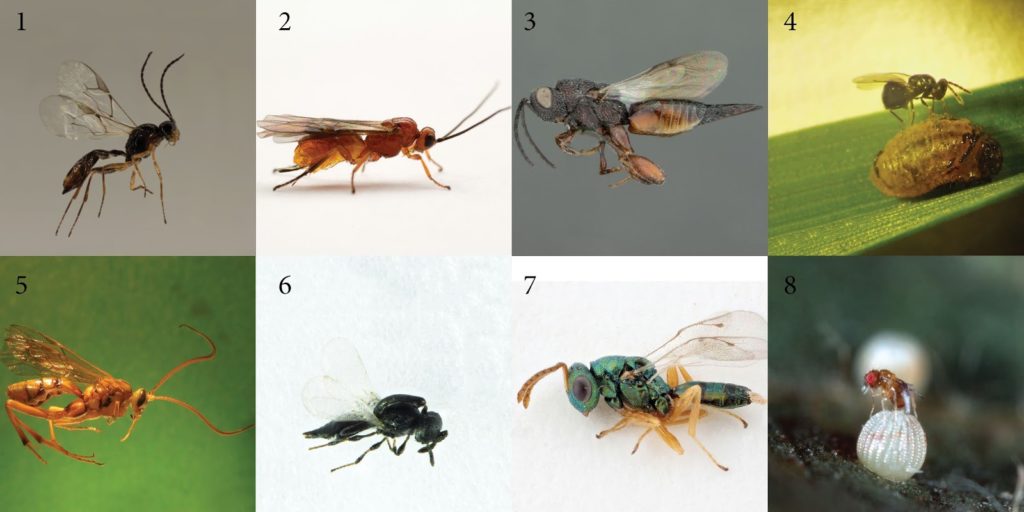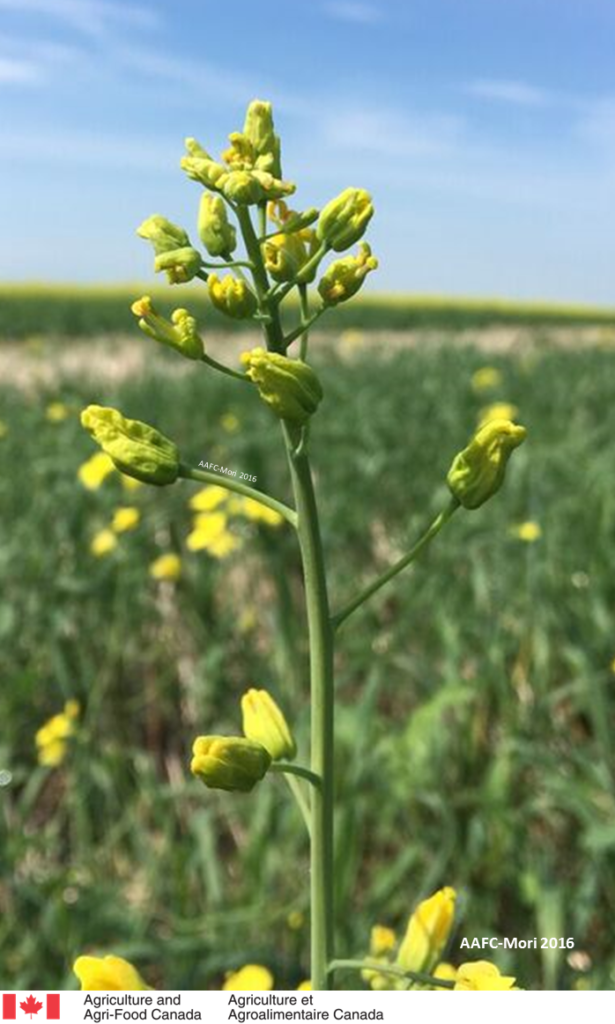The case of the innocuous versus the evil twin: When making pest management decisions, be sure that the suspect is actually a pest. This can be challenge since insects often mimic each other or look very similar. An insect that looks, moves and acts like a pest may in fact be a look-alike or doppelganger.
Doppelgangers may be related (e.g. same genus) or may not be related, as in the case of monarch butterflies (Danaus plexippus) and viceroys (Limenitis achrippus). Doppelgangers are usually relatively harmless but sometimes the doppelganger is a pest yet their behaviour, lifecycle or hosts may be different.
Correctly identifying a pest enables selection of the most accurate scouting or monitoring protocol. Identification and monitoring enables the application of economic thresholds. It also enables a producer to select and apply the most effective control option(s) including method and timing of application. For the rest of the growing season, the Insect of the Week will feature insect crop pests and their doppelgangers.
Is that a midge or a parasitoid? Why does it matter?
Small insects (i.e., less than 5 mm) are difficult to identify, even for trained specialists and professional entomologists. Especially if they are alive, flying around. Or in a sweep net sample quickly assessed in the field. In the case of midge and small-bodied parasitoids, they can be easily mistaken for one another, but their roles in agriculture tend to be very different.
Some of the most well-known prairie midge species are agricultural pests, such as the orange coloured wheat midge (Sitodiplosis mosellana), black-coloured Hessian fly (Mayetiola destructor), and alfalfa blotch leafminer (Agromyza frontella). Other midge species found on the prairies include biting midge like no-see-ums (Ceratopogonidae), black flies (Simuliidae), and non-biting midge (Chironomidae). Midge that are not considered agricultural pests may provide some ecosystem services (i.e., pollination), while other midge are disease vectors and are pests of medical and veterinary concern.

Scott Bauer, USDA Agricultural Research Service, Bugwood.org
B – Swede midge – adult
Susan Ellis, USDA APHIS PPQ, Bugwood.org
C – Wheat midge – adult
Mike Dolinski, MikeDolinski@hotmail.com
Parasitoids are natural enemies of other insects. Thus, many parasitoids are important because they help control agricultural pest populations. Adult parasitoids lay eggs, usually singly, onto or into their host. The larvae that hatch from the eggs develop using the host as food, and eventually kill the host. An individual host usually provides enough food for just one parasitoid larva. For this reason, parasitoids species are rarely larger in size than their host species. On the prairies, important parasitoid families that may be mistaken for midge or other small, black insects include: Aphidiinae, Braconidae, Chalchididae, Encyrtidae, Eulophidae, Platygasteridae, Pteromalidae and Trichogrammididae. Sticky cards or sweep net samples may contain hundreds or thousands of small, black, winged insects. Many are probably parasitoids and not pests so look closely when scouting. A few key differences to watch out for include:
- Parasitoids have two pairs of wings while midge have only one pair of wings
- Parasitoids are often shiny or metallic shades of black, blue, purple or green
- Midge may look hairy; parasitoids rarely look hairy.

Tyler Wist, AAFC
2 – Braconid wasp – adult
Alberta Agriculture and Rural Development
3 – Chalcid wasp – adult (Phasgonophora sulcata)
Michael Gates, Encyclopedia of Live, EOL.org
4 – Tetrastichus julis – adult parasitizing a cereal leaf beetle larva
Swaroop Kher, University of Alberta/AAFC
5 – Ichneumonid – adult (Banchus flavescens)
John Gavloski, Manitoba Agriculture, Food and Rural Development
6 – Platygasterid – adult (Inostemma sp.)
Tyler Wist, AAFC
7 – Pteromalid – adult (Pteromalus puparum)
Koorosh McCormack, Natural History Museum: Hymenoptera Section, EOL.org
8 – Trichogrammid – adult (Trichogramma sp.) parasitizing an egg
Jack Kelly Clark, University of California Statewide IPM Program
Specific information on these families of parasitoids and on the species of midge listed here can be found in updated Field Crop and Forage Pests and their Natural enemies in Western Canada field guide.
Review previously featured insects by visiting the Insect of the Week page.
Post contributed by Dr. Meghan Vankosky.

